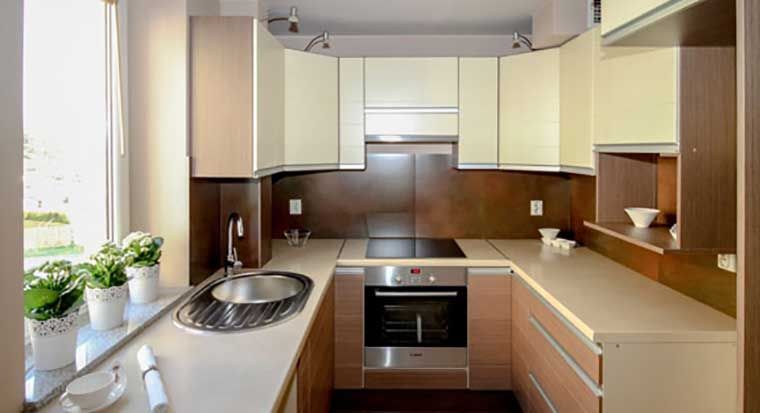Many things come to mind when it comes to kitchen remodeling. It might be your choice of cabinets and countertops or if you should go ahead and replace your appliance. With so many things going on, it is understandable if you neglect to spare a thought for your outlets. After all, it is such a mundane thing. However, you literally cannot do without them.
Table of Contents
ToggleWell placed and up to code kitchen outlets is not always a given in many homes, but it is an important consideration when upgrading your kitchen. Having an outlet just where you want it is a godsend and outlets that satisfy the municipal codes is necessary for your safety as well as legal compliance. This is even more important if you want to sell your home for a good price.
A reputable remodeling company will know all about these safety and legal issues when it comes to outlets, and can provide you with a layout that will pass inspection. However, you should have a working knowledge of these outlet basic for upgrading your kitchen.
Ground fault circuit interrupter (GFCI) outlets
The ground fault circuit interrupter or GFCI is one of electrical wiring devices designed to detect an imbalance in the current to disconnect it automatically to prevent electrical shock. Electrical engineer Charles Dalziel invented it in 1961, and quickly became common in many houses as a safety precaution.
The idea is to guard against overloading. If the load is too much for the circuit, the outlet will trip, which means your should not continue operating these appliances at the same time. Modern GFCI outlets have a reset button, so it is not a big deal. It also has a test button, which you should use once every six months to make sure it will trip when necessary.
While it is not a requirement in all states, many do require a certain proportion of GFCI outlets and circuit breakers for the kitchen to accommodate the numerous appliances common in many homes safely. The number of GFCI outlets will depend on the area to be covered.
A GFCI -protected outlet should get its power from 20-amp 120-volt circuits. This is enough to supply power to a number of outlets to accommodate most small appliances without danger of overloading the circuit. If you have enough outlets in the kitchen, you will not need extension cords.
The countertops are of particular concern, as it is where people place most small appliances. That is a lot of power required for a relatively small area. To address this, most building codes will require one GFCI outlet for every 12-inch area along the countertop. You can typically run two or more high-wattage appliances such as a coffee maker and blender at the same time without a problem.
Regular (non-GFCI) outlets
GFCI outlets are great for safety, but they will not work for some appliances. It might trip for no reason, such as a power fluctuation, and that could be disastrous for something like a freezer or refrigerator. You have to reset the GFCI manually for the power to flow through, and you might not realize it is off until it is too late.
The electrical code actually specifies non-GFCI outlets for the following appliances, but they have to be dedicated. This will ensure the appliance will get the power it needs and not overload a circuit.
The only exception is a refrigerator in an unfinished basement or garage. The code requires a GFCI outlet in this instance.
- The following are minimum requirements in most states in the US. Consult your local electrical code to make sure you are compliant.
- Dishwasher – 15 amps at 120 volts using 14/2 cable, the standard for 15 amps
- Electric range – 50 amps of 120/240 volts; Use a larger cable with a double pole circuit breaker to 240V
- Garbage disposal – 15 amps at 120 volts using 14/2 cable
- Lights – one circuit with a supply of 15 amps at 120 volts for a typical kitchen
- Microwave – 20 amps at 120 volts using a 12/2 cable, the standard for 20 amps
- Refrigerator – 20 amps at 120 volts
Safety requirements
Aside from type and power supply, the law also requires tamper-resistant outlets in the home to protect young children with questing fingers from a nasty shock. These only let the electricity flow if there are two prongs present pushed in with some force.
Conclusion
No modern kitchen can work without electrical outlets, yet it gets very little attention from homeowners. When you plan your kitchen upgrade, you should include the layout of your outlets to reflect how you use them best. This guide is for the bare minimum required by law, but you can do better than that. Consult with your remodeling contractor for advice.
Cabinet Land Kitchen and Beyond offers free consultation services and quotes, so you can have the benefit of our expertise without spending a dime.
We are a local remodeling company with a showroom located in Schaumburg, Illinois. We work only with quality natural stones for countertops as well as the best cabinet brands at the best prices compared to our competitors such as Advance Cabinets and Handsome Cabinets.
Visit us today to see what we have to offer. We service Chicago land and have the expertise and resources to complete virtually any type of countertops and kitchen cabinets – ON TIME and ON BUDGET with top quality craftsmanship that will exceed your expectations.






